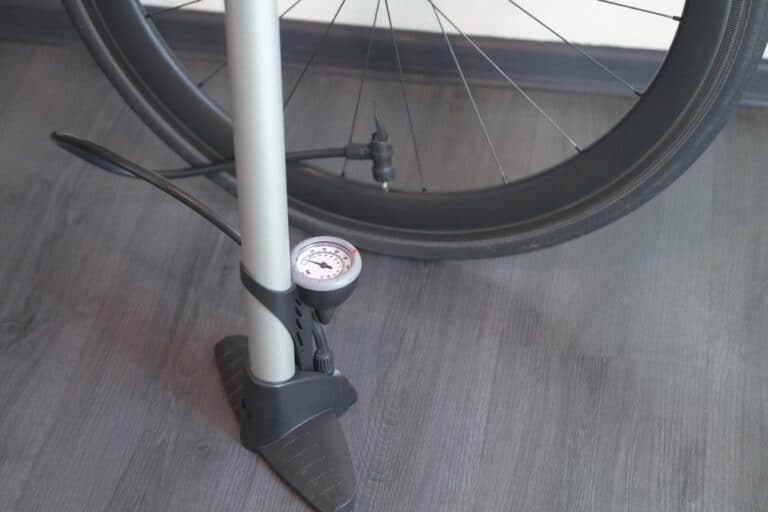Do Bicycles Have To Stop At Stop Signs?

Cycling road rules can be confusing. Depending on whether you are riding on a sidewalk or on the road, a bicycle could be viewed as a pedestrian or a vehicle. Most states have specific laws regulating cycling on public roads, but these laws are not uniform across all states. One of the inconsistent areas surrounds whether or not bicycles must stop at stop signs.
Bicycles do not have to stop at stop signs in all states. Idaho, Delaware, Arkansas, Oregon, Washington, Utah, North Dakota, Oklahoma, and some places Colorado have adopted the Idaho Stop Law. Bicycles can regard stop signs as yield signs. In all other states, bicycles must stop at stop signs.
Even in the areas where it is the law to stop at stop signs, rolling through a stop sign might not always be as dangerous as it sounds. There is a lot of support in favor of, and opposition to, creating laws that would allow cyclists to yield at stop signs. Let’s find out why.
Must Bicycles Stop At Stop Signs?
According to the law of most states, bicycles need to obey traffic signs. In most instances, cyclists must adhere to regular traffic rules, but state laws vary when it comes to stop signs and red lights.
Riding a bike makes you physically vulnerable. In any collision with a car, the cyclist is undoubtedly going to come off second-best. For this reason, most cyclists are acutely aware of their surroundings, ride cautiously, and generally obey traffic signs when cars are on the road.
The origin of the law that allowed cyclists to slow down, look around and proceed with caution if the road was clear was first introduced in Idaho in 1982. It was mainly a means for the state to clear petty dockets from their system. But an unexpected thing happened – the number of cyclist injuries declined.
The year after the ‘Idaho Stop Law,’ which is also called often called a ‘rolling stop,’ was introduced, bicyclist injuries resulting from traffic crashes declined by 14.5%. For many years, Idaho was the only state that allowed cyclists to slow down, look around and keep going, but in 2017, Delaware introduced their own version, known as the Delaware Yield.
In the following 30 months following the introduction of this law in Delaware, crashes involving cyclists at intersections dropped by a staggering 30%. More states are coming on board, but for now, bicyclists need to know the regulations in their own states to comply with the law.
In addition to the rolling stop, four of the more progressive cyclist law states also allow red lights to be regarded as stop signs. Sometimes sensors in the road aren’t able to detect bicycles if there isn’t also a car at the intersection.
Let’s go through a list of which states allow cyclists to make ‘rolling stops’ at stop signs and note where red lights can be treated as stop signs.
| States Where Rolling Stops At Stop Signs Are Legal | States That Allow Red Lights To Be Treated As Stop Signs |
|---|---|
| Idaho | Yes |
| Arkansas | Yes |
| Oklahoma | Yes |
| Colorado | Some jurisdictions only |
| Delaware | No |
| Oregon | No |
| Washington | No |
| Utah | No |
| North Dakota | No |
These are the only states that have introduced these laws as official regulations for cyclists. If you are in any other state, the law requires that you adhere to road signs as indicated.
Why Do So Many Cyclists Ignore Stop Signs?
Coming to a complete standstill when you are on a bicycle and then taking off again quickly is not the same as when you are driving a car. It takes a tremendous amount of energy to regain forward momentum from a complete stop when you are riding a bicycle.
Cars are also able to take off much faster than bikes. No matter how fit you are, no cyclist will ever be able to take off and accelerate as quickly as a car. That sometimes makes stopping and waiting with cars dangerous for bicycles, especially at traffic lights.
As soon as a traffic light turns green, cyclists who stopped will be trying to get back into a pedaling rhythm to pick up speed. They are immediately overtaken by all the cars that were also held back. The result is lots of cars that sometimes pass at unsafe distances, which can naturally be unnerving for cyclists.
Bicycle riders are acutely aware of how little stands between their bodies and a meeting with the tarmac and naturally have their own physical safety as a top priority. Avoiding collisions is, therefore, a top priority. Most cyclists are not suicidal and will not speed through stop signs or ignore red lights and simply shoot straight into dangerous traffic.
Do Cyclists Get Fined For Ignoring Stop Signs?
Unless you are riding a bicycle in one of the nine states with a law like the Idaho Stop Law, you can get a fine for failing to stop completely at a stop sign. Although many cyclists routinely slowly roll through stop signs, in most states, it is illegal.
If a law enforcement officer sees a traffic violation, whether you are in a car or on a bicycle, you could be fined. The amount you can be fined varies in each state, but if we use California as an example, the base fine amount for failing to stop completely at a stop sign is $35.
Additional fees can usually be added on top of the base fine and could amount to several hundred dollars. And if you thought that stop fine violations were expensive – the base fine for a red traffic light violation in the same state is $100!
When riding a bicycle on the road, cyclists are bound by the same road laws as motorists. A bike is regarded as a vehicle, so technically, a cyclist can be fined or arrested for anything that applies to motorists. This includes violations like speeding or riding a bicycle while under the influence of alcohol.
The only notable difference in road laws between cars and bicycles is that cyclists don’t usually need a license to ride their bikes. Also, when bicycles and cars are involved in accidents, cyclists are viewed as pedestrians in most states.
Why Should Cyclists Stop At Stop Signs?
Not everyone agrees that cyclists should be allowed to slow down at stop signs and keep rolling if the coast is clear. Many people, especially motorists, have some pretty strong views on the matter.
Let’s examine some of the biggest considerations for cyclists when pedaling toward stop signs:
- In most states, it is illegal not to completely adhere to traffic rules, even when you are on a bicycle. Ignoring a stop sign could result in a fine if a law enforcement officer spots you.
- Stop signs are often a method to slow down traffic or create a sequence for motorists to know whose turn it is to move forward. Cyclists jumping the queue can confuse motorists regarding the proper flow.
- Coming to a total halt at stop signs makes it easier to look in all directions before proceeding. This is particularly important in order to anticipate motorists that may be turning to avoid riding out in front of them.
- Opponents of the Idaho Stop Law, which allows cyclists to yield at stop signs, argue that having a different set of road rules for bicycles makes traffic less predictable. Motorists expect everyone on the road to follow the same rules, so having two sets of rules can be confusing.
What Exactly Is The Idaho Stop Law?
The Idaho Law states that cyclists must slow down when approaching a stop sign. If any other vehicle or pedestrian is already at the stop sign, they have the right of way. If a cyclist approaches the stop sign and there is no other traffic around, they can keep moving. Bicycles are, therefore, able to keep their forward momentum, albeit at a slower pace.
Much to the annoyance of some motorists, many cyclists across the country naturally live by a cycling road rule that was first introduced in Idaho thirty years ago. Instead of forcing bicycles to stop at all stop signs like cars, cyclists were given the option to yield and proceed with caution.
The original reason for introducing this cycling law in Idaho had less to do with the safety of cyclists than the amount of time courts had to process loads of minor traffic infractions caused by cyclists routinely rolling through stop signs. The law is, however, clear that all cyclists need to yield, and they should only proceed when it is safe to do so.
The Idaho Traffic Law took a while to catch on in other states, but the wheels of change are slowly turning in other places. Eight other states have also introduced laws allowing cyclists to slow down when approaching stop signs and regard stop-as-yield.
Why Do Some Motorists Hate Cyclists?
For some motorists, spotting a cyclist slowing down, glancing around furtively, and rolling through stop signs can cause intense irritation. There is quite a strong anti-cycling lobby that deems cars to have priority on roads to such a point that studies have found some motorists purposefully engage in unsafe practices when it comes to passing bicycles.
Failure to stop at stop signs is one of the most common irritants mentioned by those who aren’t supportive of sharing roads with cyclists. To many people who have never used a bicycle as a form of transport, it appears that cyclists arrogantly flaunt the law as they whizz through stop signs.
The peculiar problem of the ‘us’ vs. ‘them’ mentality is so prevalent among some car users that a 2019 survey by the University of Australia alarmingly found that some drivers viewed cyclists as sub-human. The study showed that this attitude resulted in dangerous behavior towards cyclists, like not slowing down or giving enough distance when passing a person on a bicycle.
It, therefore, stands to reason that many cyclists ride defensively and with their own safety in mind. A bicycle is also a lot smaller than a car, so cyclists can sometimes weave between heaped-up traffic and are able to keep moving. This includes not always stopping entirely at stop signs or waiting for green lights.

Do Bicycles Have To Stop At Red Lights?
Bicycles must always stop at red lights. There is no part of the country where it is legal to ignore a red light or roll through the intersection if a light is red.
However, four states have made it entirely legal for cyclists to treat red lights as stop signs. They are Idaho, Arkansas, Oklahoma, and Colorado.
The challenge with bicycles is that some traffic lights are activated by sensors set to detect cars. One human on a tiny bicycle simply isn’t large or heavy enough to trigger the lights to switch from red to green. In response to this, several states have introduced a law known as the ‘dead red’ law. This also usually applies to motorcyclists and people riding scooters.
Although there are variations between the states regarding the waiting time required, the dead red law allows bicycles to stop at a red light and proceed after a set waiting time. They may cautiously proceed even if the traffic light is still red.
The Dead Red law, which exists in several states, is not the same as the four states that allow cyclists to treat a red light as a stop sign. Dead Red laws require cyclists to wait a considerably longer time before proceeding. In the case of Indiana, cyclists need to wait for a full 120 seconds before they may legally proceed through a red light.
Like all vehicles, including cars, cyclists need to follow the standard road rules if traffic lights are inoperative. All traffic must stop entirely and proceed with caution only when it is safe to do so.
Conclusion
Eight states and some jurisdictions in Colorado allow cyclists to regard stop signs as yield signs. This law is known as the Idaho Traffic Law because it was first introduced in that state in 1982. In all other states failing to stop completely at a stop sign is a traffic offense that may result in a fine.
References:
- https://www.vox.com/2014/5/9/5691098/why-cyclists-should-be-able-to-roll-through-stop-signs-and-ride
- https://www.hg.org/legal-articles/is-a-bicycle-considered-a-car-or-a-pedestrian-34510
- https://en.wikipedia.org/wiki/Idaho_stop
- https://www.nhtsa.gov/sites/nhtsa.gov/files/2022-03/Bicyclist-Yield-As-Stop-Fact-Sheet-032422-v3-tag.pdf#
- https://www.forbes.com/sites/carltonreid/2018/12/21/new-studies-show-some-motorists-hate-cyclists-wont-ever-slow-down-when-overtaking/
- https://www.insidehook.com/daily_brief/vehicles/why-drivers-dont-like-cyclists#
- https://gothamist.com/news/cops-also-ticketing-cyclists-for-ignoring-stop-signs-at-empty-intersections
- https://www.washingtonpost.com/local/trafficandcommuting/virginia-bicyclist-stop/2021/02/12/5b4adf86-6ca9-11eb-ba56-d7e2c8defa31_story.html
- https://bikeleague.org/sites/default/files/IdahoStop-DelawareYield_7_2021.pdf







